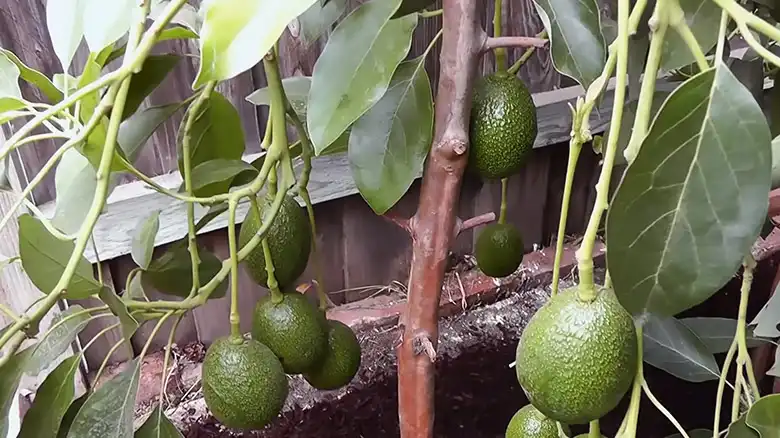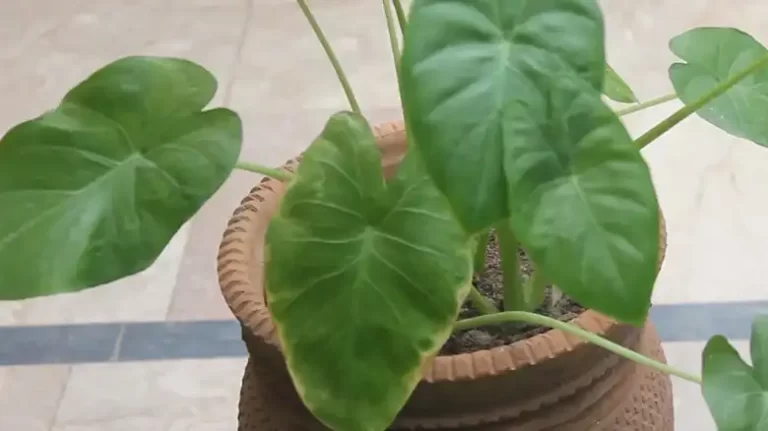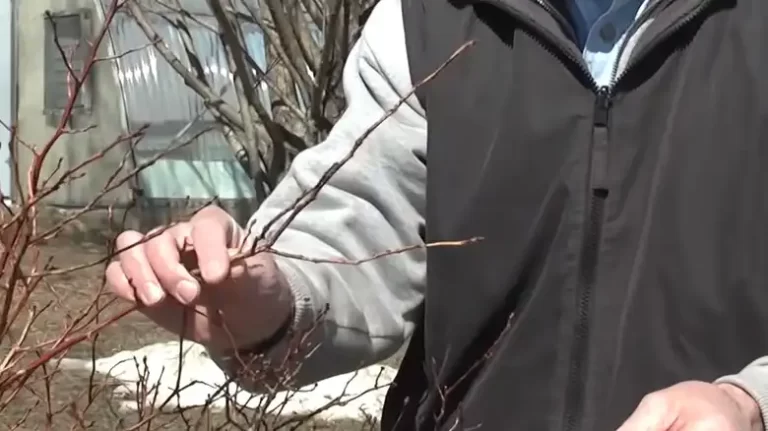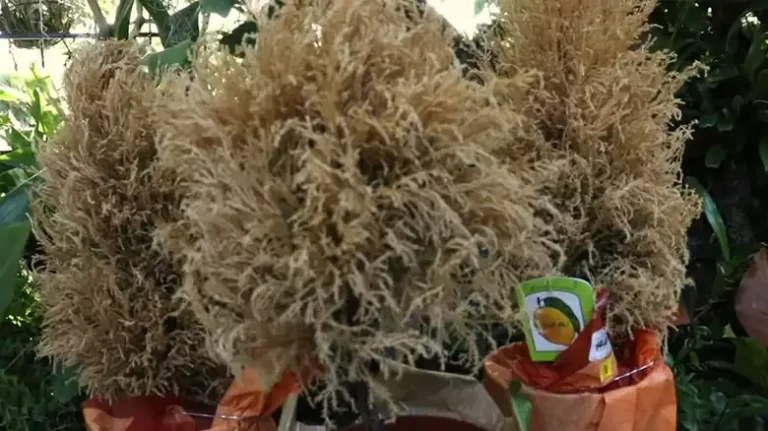Why Are My Avocado Leaves Drooping in Water
Avocado trees, with their luscious green leaves and creamy fruits, are a prized addition to any garden or indoor plant collection. However, it can be disheartening to see those once-vibrant avocado leaves drooping in water.
In this comprehensive guide, we will delve into the reasons behind this perplexing issue and explore effective solutions to restore your avocado plant’s health.

Avocado Leaves Drooping Causes
Avocado leaves drooping in water can be a concerning sight for any plant enthusiast. Understanding the underlying causes is the first step in addressing this issue and restoring your avocado plant’s vitality.
In this section, we’ll explore the common reasons why avocado leaves may droop when exposed to excess water.
Overwatering The Plant
Overzealous watering is a leading cause of drooping avocado leaves. Avocado trees, while they enjoy moisture, are susceptible to overwatering. When their roots sit in waterlogged soil for extended periods, they struggle to access essential oxygen. This lack of oxygen can lead to root suffocation, hindering their ability to deliver nutrients to the leaves. As a result, the leaves lose their turgidity and start to droop.
Underwatering The Plant
Surprisingly, underwatering can also cause avocado leaves to droop. When the soil becomes consistently dry, the plant tries to conserve water by wilting its leaves. This is a survival mechanism, signaling the need for immediate attention. It’s essential to strike a balance between not drowning your avocado plant and providing it with adequate moisture.
Poor Water Drainage
Inadequate drainage in your plant container can exacerbate the problem of drooping leaves. Containers without proper drainage can trap excess water, creating a soggy environment that avocado trees detest. When water accumulates at the root level, it increases the risk of root rot, which, in turn, affects the overall health of the plant, causing leaf drooping.
Root Problems
Issues with the avocado plant’s root system can directly impact the health of its leaves. Root rot is a common problem that can develop in waterlogged soil or due to fungal infections. When the roots are compromised, they become less efficient at delivering water and nutrients to the leaves, resulting in wilting and drooping.
Avocado Leaves Drooping Solutions
Avocado leaves drooping is a common concern among gardeners and indoor plant enthusiasts. It’s crucial to understand the root causes of this issue before diving into effective solutions. Let’s explore the reasons behind drooping avocado leaves and discover practical remedies to restore your plant’s vitality.
Overwatering: The Hidden Culprit
One of the leading causes of avocado leaves drooping is overwatering. When you water your avocado plant excessively, it can suffocate the roots by restricting oxygen absorption. As a result, the leaves suffer, and their once-lush appearance fades.
To address overwatering, it’s essential to allow the soil to dry out slightly between waterings. Ensure proper drainage in your plant container to prevent waterlogging, and consider using a well-draining potting mix.
Underwatering: A Surprising Trigger
Believe it or not, underwatering can also lead to drooping avocado leaves. When the soil remains consistently dry, the plant struggles to maintain adequate hydration. In response, it wilts its leaves as a survival mechanism, signaling the need for immediate attention.
To combat underwatering, establish a regular watering schedule. Keep the soil consistently moist but avoid drowning the roots. Balancing hydration is the key to preventing leaf wilting.
Root Problems: A Silent Saboteur
Problems with the avocado plant’s root system can directly affect leaf health. Diseased or damaged roots are less efficient at delivering water and nutrients to the leaves, resulting in wilting and drooping.
Regularly inspect the roots for signs of rot or damage. If issues are detected, consider repotting your avocado plant into fresh, well-draining soil to promote root health.
Ensuring Adequate Sunlight
Avocado plants thrive in bright, indirect sunlight. If they don’t receive enough light, they may develop weak, drooping leaves. Ensuring proper light conditions is essential for leaf health and overall plant vigor.
Place your avocado plant in a location where it receives adequate sunlight. South or west-facing windows are ideal for indoor cultivation, while outdoor plants benefit from partial shade during scorching summer months.
Humidity Matters
Avocado plants are sensitive to humidity levels. Low humidity can cause leaves to dry out and droop. Maintaining the right moisture in the air is crucial for leaf health.
To increase humidity, you can mist your plant regularly or use a humidity tray. These simple steps can help prevent leaf desiccation and keep your avocado plant thriving.
Regular Pruning for Leaf Health
Pruning isn’t just about aesthetics; it’s also essential for leaf health. Trimming away dead or damaged leaves encourages new growth and helps maintain overall plant vigor.
Use sharp, clean pruning shears to trim away brown or wilted leaves. Be gentle but thorough in your approach to promote a healthy canopy of leaves.
Maintaining Pest Control
Pests like spider mites, aphids, and scale insects can infest avocado leaves, causing them to droop and wither. Regular pest inspections are crucial for maintaining leaf health.
If you notice pests, treat your avocado plant with appropriate insecticides or natural remedies. Swift action is essential to prevent extensive leaf damage.
Consistent Care and Monitoring
Consistent care and monitoring are the foundation of healthy avocado leaves. By paying attention to your plant’s needs and addressing issues promptly, you can prevent drooping and maintain leaf vitality.
Regularly check soil moisture, inspect leaves for signs of distress, and monitor the overall health of your avocado plant. Your attentiveness will pay off in the form of lush, vibrant leaves.
The Basics of Avocado Plant Care
Taking care of your avocado plant is essential to ensure its leaves stay healthy and vibrant. Here, we’ll dive into the fundamental aspects of avocado plant care to help you understand how to prevent those pesky leaf droops.
Watering
Watering your avocado plant is a critical element of its care routine. These plants prefer consistent moisture, but they don’t appreciate being waterlogged. To maintain the right balance, water your avocado plant thoroughly, but allow the top inch of the soil to dry out between waterings.
Light
Avocado plants thrive in bright, indirect sunlight. Placing your plant near a sunny window or providing it with artificial grow lights can help ensure it gets the light it needs. Be mindful not to expose it to direct, harsh sunlight, as this can scorch the leaves.
Soil
Choosing the right soil is essential for your avocado plant’s health. Use a well-draining potting mix that allows excess water to escape, preventing root rot. A mixture of peat moss, perlite, and pine bark often works well.
Temperature and Humidity
Maintaining the ideal temperature and humidity levels is crucial. Avocado plants prefer temperatures between 60°F and 85°F (15°C to 29°C). They also thrive in moderate humidity. If the air is too dry, consider using a humidifier or misting the plant’s leaves.
Fertilization
Fertilizing your avocado plant is essential for its growth and leaf health. Use a balanced, slow-release fertilizer during the growing season (spring and summer). Avoid over-fertilizing, as this can harm the plant.
Pruning
Pruning is another aspect of avocado plant care. Regularly trim back leggy or unhealthy branches and leaves to encourage new growth and maintain the overall health of the plant.
Signs of Healthy Avocado Leaves
Avocado plants, with their vibrant green foliage and creamy fruits, can be a source of pride for any gardener. To ensure your avocado plant thrives, it’s essential to recognize the signs of healthy leaves.
Healthy avocado leaves exhibit several characteristics that indicate the overall well-being of your plant. Let’s explore these signs in detail:
1. Vibrant Green Color
Healthy avocado leaves boast a rich and consistent green color. They should not appear pale, yellow, or discolored. The vibrant green hue signals that the leaves are actively photosynthesizing, producing energy for the plant.
2. Smooth Surface
When you run your fingers over a healthy avocado leaf, it should feel smooth to the touch. Any roughness, bumps, or lesions could be indicative of underlying issues, such as disease or pests.
3. Firm and Turgid Texture
Healthy leaves should feel firm and turgid. They should stand proudly on the branches, reaching towards the light. A wilted or limp texture suggests that the leaves are not receiving adequate water or nutrients.
4. Upright Posture
Healthy avocado leaves maintain an upright posture. They are oriented towards the light source, optimizing their exposure for photosynthesis. Drooping or sagging leaves may signify problems with water uptake or environmental stress.
5. No Discoloration or Spots
Examine the surface of your avocado leaves for any discoloration, spots, or unusual markings. Healthy leaves are free from blemishes and maintain a uniform appearance. Any irregularities may indicate disease or pest infestations.
6. Well-Defined Veins
Inspect the veins of your avocado leaves. Healthy leaves have well-defined veins that provide structural support and transport water and nutrients efficiently. If the veins appear weak or discolored, it could be a sign of nutrient deficiency.
7. New Growth
A sure sign of a healthy avocado plant is the presence of new growth. Look for fresh leaves and shoots emerging from the branches. New growth indicates that the plant is actively growing and replenishing its foliage.
8. Resilience to Environmental Changes
Healthy avocado leaves demonstrate resilience to minor environmental changes. They can withstand slight fluctuations in temperature, humidity, and light without exhibiting stress. Leaves that quickly respond to environmental shifts may be healthier overall.
Avocado Leaf Diseases and Pests
Avocado trees, with their lush green foliage and creamy fruit, are a delightful addition to any garden or indoor space. However, when you notice your avocado leaves drooping in water, it can be a cause for concern.
While overwatering and underwatering are common culprits, it’s essential to explore another significant aspect of avocado leaf health: diseases and pests.
Common Leaf Diseases
Avocado trees, like all plants, are susceptible to various diseases that can affect the health of their leaves. Here are some of the most common leaf diseases you should be aware of:
1. Anthracnose
What is it: Anthracnose is a fungal disease that can cause dark, sunken lesions on avocado leaves.
Symptoms: Look for small, dark spots with yellow halos on the leaves. These spots may grow and merge, leading to wilting and leaf drop.
Treatment: To manage anthracnose, remove and destroy affected leaves, improve air circulation around the tree, and consider using fungicides if the infestation is severe.
2. Powdery Mildew
What is it: Powdery mildew is a fungal infection characterized by a powdery white substance on the leaves.
Symptoms: You’ll notice a white, powdery growth on the upper and lower surfaces of leaves. As the disease progresses, the leaves may become distorted and curl.
Treatment: Control powdery mildew by pruning affected branches, ensuring proper spacing between plants for air circulation, and using fungicides if necessary.
3. Leaf Spot
What is it: Leaf spot is a common fungal disease that leads to the formation of small, circular, dark spots on avocado leaves.
Symptoms: Look for small, dark lesions with a lighter center on the leaves. In severe cases, the spots may coalesce, causing significant leaf damage.
Treatment: Manage leaf spot by pruning affected leaves, ensuring good air circulation, and applying fungicides if the disease spreads rapidly.
Pests Affecting Avocado Leaves
In addition to diseases, avocado trees can fall victim to various pests that can wreak havoc on their leaves. Here are some of the pests you should watch out for:
1. Spider Mites
What are they: Spider mites are tiny arachnids that feed on the undersides of avocado leaves.
Symptoms: Look for stippling or yellowing of the leaves, fine silk webs on the leaves, and overall leaf discoloration.
Treatment: Control spider mites by regularly hosing down your avocado tree, introducing natural predators like ladybugs, or using insecticidal soaps.
2. Aphids
What are they: Aphids are small, soft-bodied insects that feed on the sap of avocado leaves.
Symptoms: Check for curled or distorted leaves, the presence of sticky honeydew on leaves, and the appearance of ants, which are attracted to honeydew.
Treatment: Control aphids by rinsing them off with a strong stream of water, introducing beneficial insects like lacewings or ladybugs, or using insecticidal soap.
3. Scale Insects
What are they: Scale insects are tiny, immobile insects that attach themselves to avocado leaves and feed on plant sap.
Symptoms: Look for small, round, or oval-shaped waxy scales on the leaves, often resembling brown or white bumps.
Treatment: Control scale insects by gently scraping them off with a soft brush, using horticultural oils, or introducing natural predators.
Frequently Asked Questions
Can I Save My Avocado Plant if the Leaves Are Already Drooping?
Yes, you can often save your avocado plant if you notice its leaves drooping. The key is to identify the underlying issue causing the drooping. If it’s due to overwatering, allow the soil to dry out before resuming proper watering practices.
How Often Should I Water My Avocado Plant?
The frequency of watering your avocado plant depends on several factors, including climate, pot size, and soil type. Generally, it’s advisable to water when the top inch of soil feels dry to the touch. In most cases, this translates to watering every 7-10 days. However, always consider the specific needs of your plant and adjust watering accordingly to maintain the ideal moisture balance.
Are Drooping Leaves Always a Sign of a Problem?
While drooping leaves often indicate an issue, they may not necessarily be a problem in all cases. Avocado plants can naturally respond to environmental changes, such as shifts in light or temperature, by temporarily wilting their leaves.
Conclusion
In the quest to maintain healthy avocado leaves, understanding the causes of drooping and implementing appropriate solutions is essential. By addressing overwatering, underwatering, poor drainage, and root problems, you can ensure your avocado plant thrives. Remember to provide the right balance of moisture, light, and care to keep those iconic avocado leaves vibrant and flourishing.





